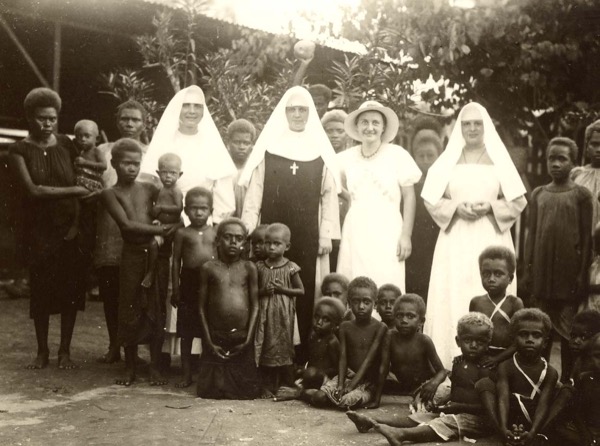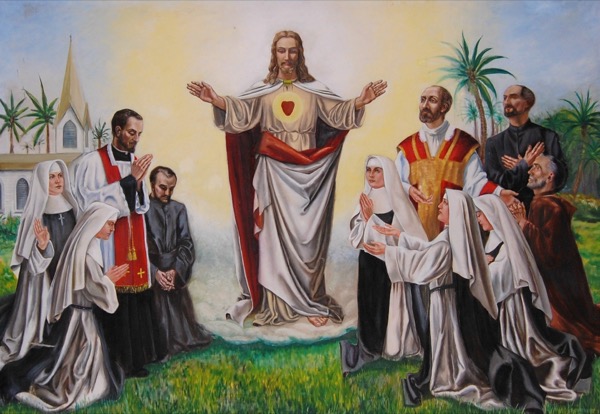Earlier Sisters Experiences of Mission in Papua New Guinea

There are many stories of the early beginnings of MSC missionary life in New Pomarenia (today known as New Britain Island of Papua New Guinea), the first mission after Germany.
On November 1, 1902, the sisters arrived in Vunapope. It was in a way like stepping into a whole new world which would then become their home. They had little time to adjust to the new environment and getting to know the place and language became their main priority in order to carry out their ministries well. They lived a very simple but challenging life. Food and housing were quite different from what they left behind in Germany and Sr. Dominica wrote, “In this furnace the sisters worked for years without complaint, with untiring joy in their tasks. Today (1927) we are far inferior to the first sisters in everything which concerns dwelling, food, etc. “
Soon after the MSC Sisters’ arrival in Vunapope a community, St. Paul’s, started up in the Baining mountains. This first mission station outside Vunapope, was entrusted to the MSC Sisters and so sisters were sent there for mission in different ministries especially nursing and teaching. It was not easy; however, the sisters grew in love with the place and the people whom they were serving. From a short biography of Sr. Anna, her letters from the convent state:
“There is so much work but often one has fever. But now I will make up for my negligence and bring you joy with my letter. Tuesday after Easter at 6 a.m. we three sisters went on a mission boat, which after a day should bring us to our destination. It was a beautiful April day and a pleasant trip. We passed many stations, where our fathers are working already. There are also two volcanoes, which are still active. Towards 3 o’clock in the afternoon we landed in Vunamarita. From here on we walked. After we had strengthened ourselves a little bit, the good father accompanied us to St. Paul’s which is a two-hour walk. We had hardly walked for a quarter of an hour when we were in deep bush already. One can walk here for hours seeing and meditating and the eyes still sees more. Even the highest trees are covered in lush green. They appear like the decorated candles of the children on Whitsunday. Here one can call out, ‘My God, how glorious is your nature!’ The most majestic palms I have seen – nowhere else the same! Suddenly we stood before a large river but there was no bridge. We did not hesitate long; we took off shoes and socks, then walked through laughing all along, for we laughed at each other. Reaching the opposite shores, we put our shoes on again and continued our trip through the jungle. How often we stood and delighted in God’s beauty.”
In the mission of God there are sacrifices as well as joys. This was felt in the story of Sr. Anna. Even though everything they were going through in their early days seemed a challenge, nothing could stop them. All they sought and felt was the grace of God. The sound of birds, the beauty they saw in the jungle, and most of all the laughter they shared all echoed through the jungles of the Baining Mountains reminding them of God’s great love and beauty.

It is common knowledge, however, that mission life includes great sacrifices and unfortunately, Sr. Anna and her five young companions suffered and died at the hands of angry natives in 1904. Rather than conquer the MSC missionary spirit, this martyrdom served to strengthen the young community’s resolve to be the Heart of God on earth. Today, their efforts over the years have produced many indigenous MSC Sisters who serve the people of PNG in various ways so that the Sacred Heart of Jesus may be known and loved by all.
PNG video footage is of Sr. Mary Seibert, MSC, a U.S. MSC Sister who lived 42 years in mission among the people of Papua New Guinea.
FOR PERSONAL REFLECTION
How would you describe the greatest strengths and greatest challenges for the pioneer MSC Sisters in PNG?
